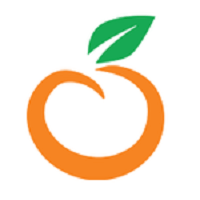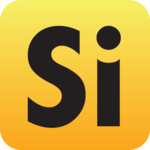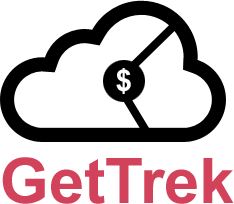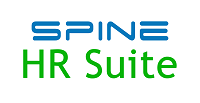Description

OrangeHRM

Small Improvements
Comprehensive Overview: OrangeHRM vs Small Improvements
OrangeHRM
a) Primary Functions and Target Markets:
-
Primary Functions:
- Core HR Functions: Employee management, organizational management, and HR reporting.
- Talent Management: Recruitment, onboarding, and performance management.
- Time and Attendance: Leave management, time tracking, and attendance reports.
- Payroll and Benefits Administration: Provides integration options with payroll systems.
- Compliance and Reporting: Tools to help comply with labor laws and generate HR reports.
-
Target Markets:
- Small and Medium Enterprises (SMEs): Primarily targets small to medium-sized businesses that need affordable and comprehensive HR solutions.
- Global Reach: Although popular in the U.S., it has a significant global user base, including emerging markets.
b) Market Share and User Base:
-
Market Share: OrangeHRM is one of the well-known open-source solutions in the HR software market. It has a substantial share in the open-source HR market but is smaller compared to proprietary giants like Workday or SAP SuccessFactors.
-
User Base: It has a large user base due to its open-source nature, attracting users who wish to customize their HR software.
c) Key Differentiating Factors:
- Open-Source Offering: One of the few HR solutions that provide a free open-source version.
- Customization Flexibility: High degree of customization available for enterprises that have specific requirements.
- Affordability: Offers competitive pricing with a free core module and paid modules for additional features.
Small Improvements
a) Primary Functions and Target Markets:
-
Primary Functions:
- Performance Management: Continuous feedback, 360-degree reviews, and performance appraisals.
- Employee Engagement Tools: Tools for goal setting, meetings, and one-on-one discussions.
- Reporting and Analytics: Provides insights into performance trends and employee engagement.
- OKR Management: Helps manage Objectives and Key Results to align with business goals.
-
Target Markets:
- Small to Medium Enterprises (SMEs): Focuses on companies seeking a straightforward approach to performance management and employee growth.
- Startups and Tech Companies: Particularly popular in tech-savvy organizations that value regular feedback and agile performance tracking.
b) Market Share and User Base:
-
Market Share: Smaller compared to full-suite HR solutions but holds a niche segment in performance management tools.
-
User Base: Grown significantly among tech companies and startups, especially those emphasizing modern, continuous feedback practices over traditional annual reviews.
c) Key Differentiating Factors:
- Focus on Performance Enhancement: Unlike many HR systems that cover a broad spectrum of HR functions, Small Improvements zeroes in on performance management and employee engagement.
- User-Friendly Interface: Known for its simple and intuitive interface that promotes regular user engagement.
- Agile Performance Processes: Built to support continuous, rather than annual, assessment techniques, aligning with modern workforce management trends.
Comparative Overview:
- Market Position: OrangeHRM offers a broader HRMS system suitable for those needing a wider range of HR functionalities, while Small Improvements is specialized in performance management for modern, agile companies.
- User Community: OrangeHRM's open-source model attracts a diverse array of users globally who look for customizable solutions, whereas Small Improvements appeals to environments focused on continuous feedback.
- Adaptability: OrangeHRM provides wider adaptability due to its comprehensive feature set, while Small Improvements leads in specialized performance management adaptability and usability.
These differences highlight the varying needs and priorities companies may have, with OrangeHRM offering a more broad-based HR tool and Small Improvements focusing on modern performance management strategies.
Contact Info

Year founded :
2006
+1 914-458-4254
Not Available
United States
http://www.linkedin.com/company/orangehrm

Year founded :
2011
+49 30 12025653
Not Available
Germany
http://www.linkedin.com/company/small-improvements
Feature Similarity Breakdown: OrangeHRM, Small Improvements
OrangeHRM and Small Improvements are both HR software platforms, but they focus on different aspects of human resource management. Below is a feature similarity breakdown:
a) Core Features in Common:
Both OrangeHRM and Small Improvements offer several core HR features:
-
Employee Management: Both platforms provide functionalities for managing employee records and profiles.
-
Performance Management: Each product offers tools for tracking and evaluating employee performance, though with differing emphases.
-
Reporting and Analytics: Both provide reporting tools that allow HR managers to generate reports and gain insights from employee data.
-
Goal Setting: They include features that help in setting and tracking goals, although the method and depth of these features might vary.
-
Feedback Mechanisms: Both platforms encourage continuous feedback between employees and management.
b) User Interface Comparison:
-
OrangeHRM: Typically offers a more traditional user interface that may focus on comprehensiveness and detailed administrative controls. It’s often designed to meet the needs of HR professionals looking for a robust, comprehensive system.
-
Small Improvements: Generally emphasizes a modern, user-friendly interface aimed at fostering communication and development among team members. It often highlights ease of use and intuitive design, making it accessible to users focusing on performance and feedback.
c) Unique Features:
-
OrangeHRM:
- Leave Management: Known for its detailed leave management module, which is robust and widely used.
- Recruitment Management: Offers a comprehensive recruitment module, which includes job posting, resume parsing, and applicant tracking.
- Time and Attendance: Provides tools for detailed time tracking and attendance management.
-
Small Improvements:
- Continuous Feedback: Strong emphasis on real-time feedback features and employee recognition.
- Engagement Tools: Incorporates features for employee engagement such as social internal recognition and tracking of progress in a more streamlined and team-focused manner.
- Agile Performance Management: Focuses on facilitating more frequent performance reviews and updates, aligning well with agile and dynamic work environments.
These comparisons highlight how the two platforms serve different HR needs — OrangeHRM is broader in terms of HR functionalities, while Small Improvements concentrates on engagement and performance management. Each product’s unique features cater to different organizational priorities and can be chosen accordingly based on what primary needs they fulfill.
Features

Not Available

Not Available
Best Fit Use Cases: OrangeHRM, Small Improvements
OrangeHRM and Small Improvements are both human resource management tools, but they cater to different needs and business contexts. Here's a breakdown of their best fit use cases:
OrangeHRM
a) For what types of businesses or projects is OrangeHRM the best choice?
OrangeHRM is an open-source HR management solution that is particularly suited for:
-
Small to Medium-Sized Businesses (SMBs): These companies often have constrained budgets but still require robust HR functionalities. OrangeHRM provides a cost-effective solution with essential HR features.
-
Organizations Looking for Customization: Because it is open-source, OrangeHRM can be customized extensively to meet specific business needs, making it ideal for companies that require tailored HR solutions.
-
Companies with Basic HR Needs: OrangeHRM covers core HR functions such as personnel information management, recruitment, performance management, and time & attendance, which are essential for businesses seeking to streamline their basic HR processes.
-
Businesses in Various Industries: Due to its customizable nature and broad feature set, OrangeHRM is suitable for diverse industries including retail, healthcare, education, and manufacturing.
d) How do these products cater to different industry verticals or company sizes?
OrangeHRM caters well to industries that need flexibility and customization. Its modular system allows companies to add or modify features as needed, which can be particularly beneficial for industry-specific needs. For instance, a healthcare company might require specific compliance tracking features that a tech startup would not.
Small Improvements
b) In what scenarios would Small Improvements be the preferred option?
Small Improvements is a performance management tool that is ideal for:
-
Organizations Focused on Continuous Feedback and Development: Companies that prioritize ongoing employee feedback, goal setting, and continuous professional development would find Small Improvements beneficial.
-
Mid-Sized to Large Companies: These organizations often have structured performance review processes and require tools that facilitate regular check-ins, feedback sessions, and goal tracking.
-
Tech-Savvy, Modern Companies: Firms in fast-paced industries like technology, finance, and digital marketing, that value agility and real-time feedback, would benefit from its user-friendly and modern interface.
-
Remote and Distributed Teams: Small Improvements supports asynchronous communication, making it effective for remote teams that need to conduct reviews and provide feedback across different time zones.
d) How do these products cater to different industry verticals or company sizes?
Small Improvements is particularly suited for industries with a strong emphasis on innovation and employee development. Sectors like technology, professional services, and creative industries can leverage its performance management capabilities to foster a culture of growth and improvement. Its scalability and robust feature set make it well-suited for larger organizations looking for a structured yet flexible approach to performance management.
In summary, OrangeHRM is ideal for businesses looking for a customizable, open-source HR solution with fundamental HR features, catering to a broad range of industries and company sizes. Small Improvements, on the other hand, is better suited for companies that emphasize continuous feedback and development, particularly in industries that are dynamic and innovation-driven.
Pricing

Pricing Not Available

Pricing Not Available
Metrics History
Metrics History
Comparing teamSize across companies
Conclusion & Final Verdict: OrangeHRM vs Small Improvements
When evaluating the overall value of OrangeHRM and Small Improvements, it is important to consider factors such as features, ease of use, scalability, customer support, implementation cost, and long-term value.
Conclusion and Final Verdict:
a) Which product offers the best overall value?
This depends on the specific needs and priorities of the organization. OrangeHRM might offer better value for organizations seeking a comprehensive human resources management solution with a wide range of functionalities, including core HR, recruiting, and performance management. Small Improvements, on the other hand, could be more valuable for companies that are primarily focused on enhancing employee performance and development through continuous feedback and performance appraisal features.
b) Pros and Cons of Each Product:
OrangeHRM:
-
Pros:
- Comprehensive HR features covering various HR needs.
- Customizable modules that can adapt to specific organizational requirements.
- Open-source option available, allowing for more flexibility and lower cost.
- Strong community support for open-source users.
-
Cons:
- The extensive feature set can be overwhelming for small companies with simple needs.
- Implementation and customization might require more time and resources.
- The user interface might not be as intuitive or modern as some might prefer.
Small Improvements:
-
Pros:
- Focused on enhancing employee performance through feedback and goals.
- Intuitive and user-friendly interface, easy for employees to navigate and use.
- Supports a culture of continuous improvement and engagement.
- Easy integration with other tools for a seamless experience.
-
Cons:
- Limited focus mainly on performance and feedback, not a full HR solution.
- Might require additional HR systems to cover broader HR functionalities.
- Can become costly when needing integrations or additional tools.
c) Recommendations for Users:
-
Assess Organizational Needs:
- Users should identify whether their primary requirement is comprehensive HR management (Opt for OrangeHRM) or if their focus is primarily on employee performance and feedback (Opt for Small Improvements).
-
Budget Considerations:
- Consider the long-term value and overall budget associated with implementation and any additional tools needed.
-
Scalability and Growth:
- For companies anticipating growth, an adaptable and scalable solution like OrangeHRM could be beneficial, whereas those looking to enhance their current culture of continuous feedback and performance focus may find Small Improvements more aligned.
-
Trial Periods:
- Take advantage of any free trials or demos to get a practical sense of each product's interface and capabilities.
-
Integration Needs:
- Evaluate existing systems and determine integration requirements. Small Improvements might be preferable if seamless integration with existing performance-focused tools is a priority.
Ultimately, the decision will depend heavily on the specific needs and goals of the company and how well each solution aligns with those objectives.
Add to compare
Add similar companies




